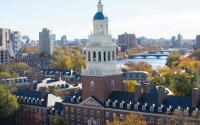15 September 2006Michael McCarthy and David Usborne
The melting of the sea ice in the Arctic, the clearest sign so far of global warming, has taken a sudden and enormous leap forward, in one of the most ominous developments yet in the onset of climate change.
Two separate studies by Nasa, using different satellite monitoring technologies, both show a great surge in the disappearance of Arctic ice cover in the last two years.
One, from the Jet Propulsion Laboratory in California, shows that Arctic perennial sea ice, which normally survives the summer melt season and remains year-round, shrank by 14 per cent in just 12 months between 2004 and 2005.
The overall decrease in the ice cover was 720,000 sq km (280,000 sq miles) - an area almost the size of Turkey, gone in a single year.
The other study, from the Goddard Space Flight Centre, in Maryland, shows that the perennial ice melting rate, which has averaged 0.15 per cent a year since satellite observations began in 1979, has suddenly accelerated hugely. In the past two winters the rate has increased to six per cent a year - that is, it has got more than 30 times faster.
The changes are alarming scientists and environmentalists, because they far exceed the rate at which supercomputer models of climate change predict the Arctic ice will melt under the influence of global warming - which is rapid enough.
If climate change is not checked, the Arctic ice will all be gone by 2070, and people will be able to sail to the North Pole. But if these new rates of melting are maintained, the Arctic ice will all be gone decades before that.
The implications are colossal. It will mean extinction in the wild - in the lifetime of children alive today - for one of the world's most majestic creatures, the polar bear, which needs the ice to hunt seals.
It means the possibility of a lethal "feedback" mechanism speeding up global warming, because the dark surface of the open Arctic ocean will absorb the sun's heat, rather than reflect it as the ice cover does now - and so the world will get even hotter.
But most of all, the new developments add to the growing concern that climate change as a process is starting to happen much faster than scientists considered it would, even five years ago when the UN's Intergovernmental Panel on Climate Change published its last report.
"These are the latest in a long series of recent studies, all telling us that climate change is faster and nastier than we thought," said Tom Burke, a former government green adviser and now a visiting professor at Imperial College London. "An abyss is opening up between the speed at which the climate is changing and the speed at which governments are responding.
"We must stop thinking that this is just another environmental problem, to be dealt with when time and resources allow, and realise that this is an increasingly urgent threat to our security and prosperity."
Yesterday, Jim Hansen, the leading climatologist and director of the Goddard Institute for Space Studies, in New York, issued a now-or-never warning to governments around the world, including his own, telling them they must take radical action to avert a planetary environmental catastrophe. He said it was no longer viable for nations to adopt a "business as usual" stance on fossil-fuel consumption.
"I think we have a very brief window of opportunity to deal with climate change ... no longer than a decade, at the most," he said.
Early in his first term, President George Bush pulled the US out of the Kyoto Treaty that is meant to bind nations to lower emissions of warming gases. However, opinion in the US is starting to change, as evidenced by the huge success of the documentary on climate change, An Inconvenient Truth, narrated by the former US vice-president Senator Al Gore.
The two Nasa Arctic studies, released simultaneously, break fresh ground in dealing with the perennial, or "multi-winter" ice, rather than the "seasonal" ice at the edge of the icefield, which melts every summer.
Concern about the melting rate has hitherto focused on the seasonal ice, whose summer disappearance and retreat from the landmasses of Arctic Canada and Siberia is increasingly obvious. In September 2005, it retreated to the lowest level recorded. Such rapid shrinkage of the perennial ice has not been shown before. "It is alarming," said Joey Camiso, who led the Goddard study. "We've witnessed sea ice reduction at 6 per cent per year over just the last two winters, most likely a result of warming due to greenhouse gases."
Dr Son Nghiem, who led the team which carried out the Jet Propulsion Laboratory study, said that in previous years there had some variability in the extent of perennial Arctic ice. "But it is much smaller and regional," he said. "However, the change we see between 2004 and 2005 is enormous." Britain's Professor Julian Dowdeswell, the director of the Scott Polar Research Institute in Cambridge, agreed the changes shown in the American studies were "huge", adding: "It remains to be seen whether the rate of change is maintained in future years."
The melting of the Arctic ice will not itself contribute to global sea-level rise, as the ice floating in the sea is already displacing its own mass in the water. When the ice cube melts in your gin and tonic, the liquid in your glass does not rise.
There are great volumes of land-based ice - the ice sheets of Greenland and Antarctica, and mountain glaciers - which are subject to exactly the same temperature rises as the Arctic ice, and which have also started to melt. They will add to sea levels. The West Antarctic Ice Sheet would, if it were to collapse, raise sea levels around the world by 16ft (5m), submerging large parts of Bangladesh and Egypt - and London.
http://news.independent.co.uk/environment/article1603667.ece






